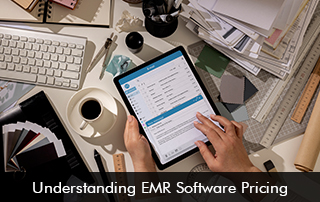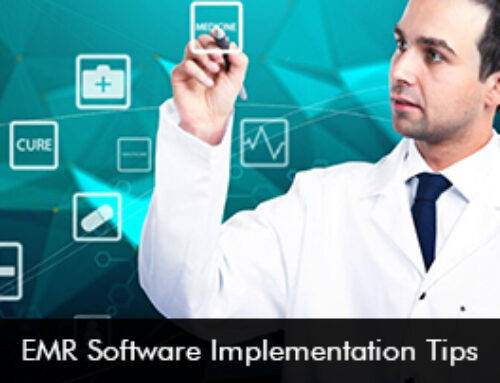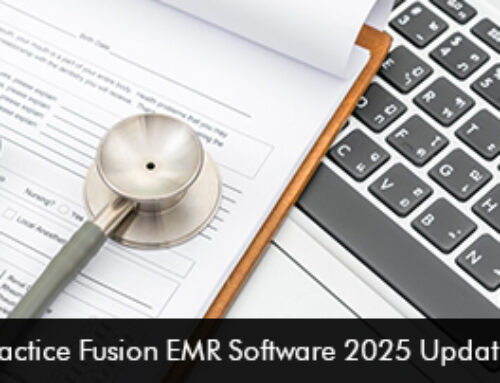Electronic Medical Records (EMR) software promises improved patient care, streamlined workflows, and enhanced data management. However, understanding the intricacies of EMR software pricing can be a daunting task for healthcare providers. This comprehensive guide unravels the layers of EMR software pricing, to give clarity.
The Importance of EMR Software
Before breaking down the intricacies of EMR pricing, it’s crucial to recognize the profound impact EMR software has on healthcare:
1. Enhanced Patient Care
EMR software allows healthcare providers to access patient records instantly, enabling more informed decisions and quicker responses to patient needs. This leads to improved patient care, reduced medical errors, and enhanced patient safety.
2. Streamlined Workflows
Digital record-keeping eliminates the need for paper records, streamlining administrative tasks, and reducing the risk of data entry errors. This efficiency translates into time saved for healthcare professionals, allowing them to focus more on patient care.
3. Comprehensive Data Management
EMR systems offer a centralized repository for patient data, including medical histories, lab results, prescriptions, and imaging reports. This comprehensive data management leads to better coordination of care and improved patient outcomes.
4. Data Security and Privacy
EMR systems are designed with robust security measures to protect patient data. Compliance with regulations like HIPAA (Health Insurance Portability and Accountability Act) ensures that patient information remains confidential and secure.
Understanding EMR Software Pricing Models
EMR software pricing models can vary significantly, and understanding these models is the first step toward informed decision-making. Here are the primary EMR pricing models:
1. Subscription-Based EMR SoftwarePricing
Subscription-based pricing, also known as Software as a Service (SaaS), involves paying a recurring fee, often monthly or annually, to access and use the EMR software. This pricing model typically includes software updates, maintenance, and customer support within the subscription cost. Subscription-based pricing provides predictable, evenly distributed expenses, making it attractive for budget-conscious practices.
2. Perpetual Licensing
Perpetual licensing entails a one-time upfront payment to purchase a software license. Once you acquire the license, you own the software indefinitely, but ongoing costs may still be incurred for support, updates, and maintenance. While this model may appear more expensive initially, it can be cost-effective in the long run, especially for practices with stable budgets and long-term plans.
3. Usage-Based EMR Software Pricing
Some EMR vendors offer usage-based pricing, where the cost depends on factors such as the number of users, patient records, or transactions. This model allows costs to scale with usage, making it suitable for practices with fluctuating workloads. However, monitoring usage is crucial to avoid unexpected expenses.
Factors Influencing EMR Software Pricing
To understand EMR software pricing fully, it’s essential to consider the factors that influence the costs involved. Here are the key factors to keep in mind:
1. Practice Size
The size of your healthcare practice plays a significant role in EMR software pricing. Larger practices with more users, patient records, and data storage needs may incur higher costs than smaller practices. Some EMR vendors offer tiered pricing to accommodate practices of different sizes.
2. Software Features and Functionality
EMR software comes with a wide range of features and functionalities, from basic patient record management to advanced telemedicine capabilities. The more features you require, the higher the cost is likely to be. It’s essential to evaluate your practice’s specific needs and prioritize features accordingly to avoid overpaying for unnecessary functionalities.
3. Customization and Integration
If your practice requires extensive customization or integration with other healthcare systems, such as billing or laboratory systems, be prepared for additional costs. Custom development work and integration efforts can impact both the initial implementation cost and ongoing expenses.
4. User Licensing
User licensing is a critical factor in EMR software pricing. The type of user licenses you choose (named users, concurrent users, or role-based licenses) and the number of users you require will directly affect costs. Carefully assess your staffing needs and usage patterns to determine the most cost-effective licensing model.
5. Deployment Model
EMR software can be deployed on-premises, in the cloud, or through a hybrid model that combines both. The deployment model you select can have a significant impact on your budget. On-premises solutions require upfront hardware investments, while cloud-based solutions involve ongoing subscription fees. Consider your IT infrastructure and budget constraints when choosing a deployment model.
6. Training and Support
Effective training and support are crucial for successful EMR adoption. These services often come with additional costs, so budget for training sessions, user onboarding, and ongoing support to ensure your staff can maximize the software’s potential.
7. Data Migration and Conversion
If you are transitioning from paper records or migrating from an existing EMR system, budget for data migration and conversion services. Proper planning and resource allocation for data migration can help prevent unexpected costs and data quality issues during the transition.
8. Regulatory Compliance and Security
Healthcare practices must adhere to various regulations and standards, such as HIPAA. EMR software that meets these requirements may come with added costs associated with compliance features and enhanced security measures. Prioritize compliance and security to protect patient data and avoid potential legal issues.
Calculating the Total Cost of Ownership (TCO)
When evaluating EMR software pricing, it’s essential to consider the total cost of ownership (TCO) over the software’s lifespan. TCO encompasses not only the initial implementation costs but also ongoing expenses such as subscription fees, maintenance, and support. Calculating TCO provides a more accurate picture of the long-term financial commitment.
To calculate TCO, consider the following:
- Initial Implementation Costs – This includes software licenses, hardware (if applicable), customization, and training expenses.
- Ongoing Subscription Fees – If you are using a subscription-based model, factor in the recurring fees over the expected lifespan of the EMR system.
- Maintenance and Support Costs – Include expenses related to software updates, patches, and customer support services.
- Data Storage Costs – If your EMR system involves cloud-based storage, estimate the costs associated with data storage beyond the initial allocation.
- Training and Staffing Costs – Account for ongoing training and staffing expenses to ensure proficient use of the EMR system.
- Regulatory Compliance Costs – Budget for any additional costs related to maintaining compliance with healthcare regulations.
- Data Migration and Conversion Costs – If applicable, include the expenses associated with transitioning from paper records or an existing EMR system.
By calculating TCO, you can make more informed decisions about the long-term financial impact of your chosen EMR software.
Hidden Costs Within EMR Software Pricing
In addition to the factors mentioned above, there are some hidden costs associated with EMR software that you should be aware of:
1. Hardware Costs
For on-premises deployments, you’ll need to invest in server hardware, networking equipment, and other infrastructure components. These upfront costs can be substantial.
2. Data Storage Costs
Cloud-based EMRs may charge for data storage beyond a certain limit. Understand the storage requirements of your practice and the associated costs.
3. Maintenance and Updates
Consider the ongoing costs of software maintenance, including updates and patches. Failure to keep your software up to date can result in security vulnerabilities and compliance issues.
4. Additional User Costs
If your practice grows or requires additional users beyond your initial license count, you’ll incur additional licensing fees.
Selecting the Right EMR Software
The selection of the right EMR software is a critical decision that can impact your practice’s efficiency, patient care, and financial health. To ensure you make an informed choice:
- Research Vendors Thoroughly – Take the time to research EMR vendors thoroughly. Look for reputable companies with a history of delivering high-quality software and reliable customer support. Customer reviews and references can provide valuable insights into a vendor’s performance.
- Request Detailed Quotes – Request detailed quotes and proposals from multiple EMR vendors. Ensure that each vendor provides a breakdown of costs, including software licenses, implementation services, training, support, and any additional fees. This information will help you compare vendors and make an informed decision.
- Consider Vendor Reputation – Consider the vendor’s reputation in the healthcare industry. Vendors with a track record of serving healthcare practices and complying with industry standards are more likely to provide reliable and compliant solutions.
- Assess User-Friendliness – Evaluate the user-friendliness of the EMR software. A system that is intuitive and easy to use can reduce training costs and improve user adoption.
- Evaluate Integration Capabilities – Assess the software’s integration capabilities with other systems and healthcare providers. Seamless integration can improve communication and data sharing, enhancing overall patient care.
- Test the Software – Whenever possible, request a demo or trial period to test the software’s functionality and usability. This hands-on experience can help you make an informed decision.
Understanding EMR software pricing is crucial for healthcare practices seeking to digitize their operations and improve patient care. By considering the various pricing models, evaluating the factors that influence costs, calculating the total cost of ownership, and being aware of hidden costs, you can make informed decisions that align with your practice’s needs and budget.
Selecting the right EMR software vendor is equally important. Thorough research, detailed quotes, and a focus on user-friendliness and integration capabilities can guide you toward a solution that enhances your practice’s efficiency and quality of care while managing costs effectively. EMR software is not just an investment; it’s a transformative tool that can help your practice thrive in the digital age of healthcare.







